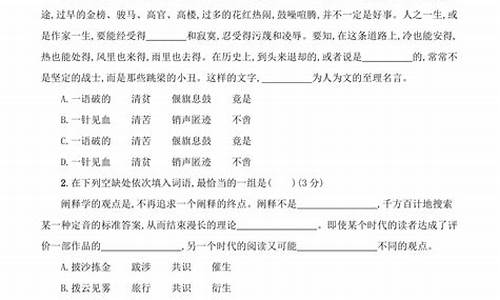instrumentality怎么读_instrumentality
1.Marketing译为什么最贴切
2.求翻译。有道翻译的就算了。。不准、
3.求翻译此文
4.求助英文词组的中文翻译和英语解释,谢谢!
5.求哪位法律英语高手,给写一篇关于介绍英美公司法“揭开公司面纱”的小文章
6.英语human beings walk up with the rest怎么翻译?

(两种事实、观念等的)联系,关联;联结;接通;连接;连接点;(尤指电力系统的)接头;转车;旅行交通工具;有社交或业务关系的人(或机构);亲戚。
1.短语搭配
connection form [数] 联络形式 ; 连接形式
Cartan connection 嘉当联络 ; 加当联络 ; 卡当联络
parallel connection [电] 并联 ; 并联连接 ; 并朕 ; 并行连接
2.双语例句
I explore whether she can recall any feelings of connection with me.?
我试图探索她是否能够回想起任何与我连接的感觉。
But this telephone is only a greeting of one morning, except this time, they do not almost have any connection.?
但这个电话只是一个早上的问候,除了这个时间,他们几乎没有任何联系。
I told them that I have no connection to what they described.?
我告诉他们我和他们所说的完全没有关系。
Tourism?is?an?industry?that?has?a?necessarily?close?connection?with?s.?
旅游业是与政府有着必然的密切联系的产业。
The?minister?denied?there?was?a?direct?connection?between?the?two?issues.?
部长否认两者之间有直接的联系
Marketing译为什么最贴切
是的。文件头部分以后,有一空白行,此行后开始的长度,以字节(1byte=8bits) 为单位,就是内容的长度?content-length。
双语例句
[with infinitive]the separate details coalesce to form a single?body?of scientific thought.
独立的细节聚合形成科学思想的主体。
The team might be seeded because of their pull within 's international?body.
凭其在国际足球机构的影响力,该队有可能被定为种子队。
A corporate?body?can act only through the instrumentality of human beings.
法人组织只能以人为媒介来发挥作用。
The?body?of a woman had been fished out of the river.
从河里打捞出一具女尸。
The?body?undergoes catastrophic collapse towards the state of a black hole.
天体经历着朝黑洞状态的大崩溃。
求翻译。有道翻译的就算了。。不准、
Marketing是经贸英语中最常用的词语之一。在外贸人员的名片上我们也经常看到marketing department和 marketing plan等词语。它们通常被译成“销售部”和“销售计划”。在外贸函电和外贸英语教科书中,marketing常被译为“销售”。笔者认为这种译法不够确切。这除了有语言方面的原因外,还涉及到中外经营管理体制的不同。
我们不妨先从market作动词的含义谈起。当market作及物动词时,意思是to carry on all activities by which transfer of title or possession of a product from seller to buyer is effected; 或者是to introduce a product on the market(n.市场)。这种含义的market及其派生marketing的意思与sell和sale相近,可译为“销售”,如:
The exporter wishes to market his goods in a foreign country through instrumentality of an independent agent. 那个出口商想要靠一位独立代理人在国外销售其货物。
The joint venture insisted on their cooperative marketing the new computers. 这家合资企业坚持它们合作销售新计算机。
当market作不及物动词时,它与trade含义相同,表示在市场上进行买卖活动,它派生的marketing只能译为“(市场上的)交易,买卖”,而不是单一的“销售”。例如:do our evening marketing(到夜市上去买(卖)东西);an international marketing company(一家国际贸易公司)。
Marketing 作为经贸术语,《Americana 百科全书》的解释是:“Marketing is defined as 'the performance of business activities directed towards, and incident to, the flow of goods and services from producer to customer or user'. Marketing, therefore, is made up on one hand of physical activities such as transporting, storing, and selling goods, and on the other hand of a series of decisions which must be reached by any organization undertaking any part of the process of moving goods from the producer to the user.”
由此可知marketing一词的含义很广,它主要是指提供产品和服务来满足消费者的需要。具体包括:市场调查、开发产品、制定销售政策、规定合理价格、改进销售方法、开拓销售渠道、调节产品贮运、培训业务人员、改进售后服务、公共关系和广告业务等等。所以不能狭隘地把marketing理解成selling或sale,实际上后者仅仅是marketing的一部分。
例如: Marketing of a product does not only mean selling, but going to the market,visiting our customers…… 推销产品不只意味着出售,而且还要亲临市场,拜访客户……
汉译时需要根据具体的语言环境译成“推销”、“行销(学)”、“市场学”和“销售学”等等。
至于本文开头提到的marketing department到底怎样翻译,笔者认为先要了解中外经贸机构的设置情况。60年代末,西方工业由于广泛采用电子技术而出现了一个质变性的飞跃,经济发展空前迅速,市场竞争日趋激烈。为了提高竞争能力,这些国家的企业、公司越来越感到发展与推销产品有关的各个业务环节的综合作用的重要性。许多公司扩大了原来的sales department的业务范围,并把它改为marketing department.这是西方企业销售经营管理体制改革中的一项重要内容。英国广播公司(BBC)出版的《商业英语》( The language of business )一书在解释marketing department时指出: In many firms now, the sales department, advertising department, public relations and so on are combined into one department, called marketing. 其业务范围相当于我国现行外贸机制中各外贸进出口公司的出口处、商情处、外事组等部门。
因此笔者认为在翻译来自国外的函电或资料时,把marketing department译为“市场开拓部”、“推销部”更为确切些。而我国外贸公司设立的单纯销售部门的英译一般用sales department. 在我国的产、供、销合一的企业管理体制下,“销”是对应“产”而言,和marketing所指的“推销”或“销售”概念也有一定的区别。
求翻译此文
在此协议下,双方中任何一方未能及时获不能履行合同不能视之为违约,不接受损失补偿要求,这些情况是指不受双方控制而导致发生的情况,包括但不限于一般性情况下的政府行为、自然力量、工人罢工或其他集体行为、火灾、洪水灾害、爆炸、战争、、飓风、地震、偶然事件、公共秩序危害事件、叛乱、起义、、大规模传染疾病、隔离限制法令、劳动力不足、材料供给、子承包商的误产、运输禁运、运输造成的延误及损失、政府法律、规则、任何当权政府、政权、部门和组织的命令与指令以及任何具有完成行为能力司法部门随之所采取的手段。
完全手打,不采纳你都不够意思。
求助英文词组的中文翻译和英语解释,谢谢!
本文证明了much-ignored合法性和私有化的主题。莫伊的文章表明,被动提高公共管理的关键问题,尊重私有化的极限,起源于现实公共管理在很大程度上已经离弃自己的知识根源嵌入公法,而不是经济或社会科学。
墨认为,私有化的支持者认为公共和私营部门是一样的。他们关心部门可以做这项工作最有效,不要打扰与法律或组织结构问题。不必要的公共和私营部门是一样的,但是不同的必需品。之间必须画一条线公共和私人和公共法律规定。
1819年最高法院决定麦克洛克马里兰州告诉我们,一个主权不能征税由下属单位因为这样做将允许另一个身体来确定主权的命运。法院认为,如果政府拥有任何一个实体的一部分,整个身体成为政府的工具。这一裁决是重要,因为政治演员、行政和立法,都与一个公共角色分配功能很大程度上没有标准和后果,是很昂贵的公共和私营部门。这样的情况与联邦资产处置协会寻求成为私人的方向和利益,但公共权利和特权。
最重要的特征,公共和私人是主权。主权属性包括:
·使用强制执行其合法权利。
·合法权利与另一个主权了战争。
·主权国家免于诉讼除了他们的许可。
主权是不可分割的。
·主权国家可能否认债务但不能破产。
·主权国家有权建立规则保护和转移财产,公共和私人(土地征用权)。
主权这一问题是很重要的,因为私人公司承包的政府可能会陷入法律困境。出现许多问题,例如:
·如果“私人”宣布破产的企业,提供公共商品或服务?
·员工,办公室和记录的保护隐私裁决基于第四修正案或他们认为“公共”。
还有其他因素要考虑。问题的问责、公共安全、国家安全,在私有化和腐败需要讨论。
求哪位法律英语高手,给写一篇关于介绍英美公司法“揭开公司面纱”的小文章
2. profit margin: 利润率
A profit margin is the amount that is made in a business after the costs have been subtracted.
3.indrect involvement :间接参与
join a business by means of assistant or other coumunication tools.
4.marketing mix: 销售组合
The marketing mix is generally accepted as the use and specification of the 4 Ps describing the strategic position of a product in the marketplace.
5.dual price:双重价格
Selling the same or identical product at different prices in different markets. It may indicate an intention to engage in dumping.
6.consumer product:消费产品
Merchandise or other item of common or daily use, ordinarily bought by individuals or households for private consumption. See also consumer goods.
7.channel length:沟道长度
Number of individual entities comprising the channel of distribution between the producer and the consumer. See also channel width.
8.medium:媒介
a means or instrumentality for storing or communicating information.
9.personal selling:个人销售
Face to face selling in which a seller attempts to persuade a buyer to make a purchase. Personal selling is as old as commerce itself。
10.public relations: 公共关系
Systematic effort to create and maintain goodwill of an organization's various publics (customers, employees, investors, suppliers, etc.), usually through publicity and other non-paid forms of communication. These efforts may also include support of arts, charitable causes, education, sporting events, etc.
英语human beings walk up with the rest怎么翻译?
Piercing the corporate veil describes a legal decision to treat the rights or duties of a corporation as the rights or liabilities of its shareholders or directors. Usually a corporation is treated as a separate legal person, which is solely responsible for the debts it incurs and the sole beneficiary of the credit it is owed. Common law countries usually uphold this principle of separate personhood, but in exceptional situations may "pierce" or "lift" the corporate veil. A simple example would be where a businessman has left his job as a director and has signed a contract to not compete with the company he has just left for a period of time. If he set up a company which competed with his former company, technically it would be the company and not the person competing. But it is likely a court would say that the new company was just a "sham", a "fraud" or some other phrase,[1] and would still allow the old company to sue the man for breach of contract. A court would look beyond the "legal fiction" to the reality of the situation.
Piercing the corporate veil is not the only means by which a director or officer of a corporation can be held liable for the actions of the corporation. Liability can be established through conventional theories of contract, agency, or tort law. For example, in situations where a director or officer acting on behalf of a corporation personally commits a tort, he and the corporation are jointly liable and it is unnecessary to discuss the issue of piercing the corporate veil. The doctrine is often used in cases where liability is found, but the corporation is insolvent.
Corporations exist in part to shield the personal assets of shareholders from personal liability for the debts or actions of a corporation. Unlike a general partnership or sole proprietorship in which the owner could be held responsible for all the debts of the corporation, a corporation traditionally limited the personal liability of the shareholders. The limits of this protection have narrowed in recent years. Shareholders are increasingly personally liable.
Piercing the corporate veil typically is most effective with smaller privately held business entities (close corporations) in which the corporation has a small number of shareholders, limited assets, and recognition of separateness of the corporation from its shareholders would promote fraud or an inequitable result.
There is no record of a successful piercing of the corporate veil for a publicly traded corporation because of the large number of shareholders and the extensive mandatory filings entailed in qualifying for listing on an exchange.
[edit] United States
In the United States, corporate veil piercing is the most litigated issue in corporate law.[2] Although courts are reluctant to hold a director or active shareholder liable for actions that are legally the responsibility of the corporation, even if the corporation has a single shareholder, they will often do so if the corporation was markedly noncompliant, or if holding only the corporation liable would be singularly unfair to the plaintiff. In most jurisdictions, no bright-line rule exists and the ruling is based on common law precedents. In the US, different theories, most important "alter ego" or "instrumentality rule", attempted to create a piercing standard. Mostly, they rest upon three basic prongs - namely "unity of interest and ownership", "wrongful conduct" and "proximate cause". However, the theories failed to articulate a real-world approach which courts could directly apply to their cases. Thus, courts struggle with the proof of each prong and rather analyze all given factors. This is known as "totality of circumstances".
There is also the matter of what jurisdiction the corporation is incorporated in if the corporation is authorized to do business in more than one state. All corporations have one specific state (their "home" state) to which they are incorporated as a "domestic" corporation, and if they operate in other states, they would apply for authority to do business in those other states as a "foreign" corporation. In determining whether or not the corporate veil may be pierced, the courts are required to use the laws of the corporation's home state. This issue can be significant, for example, the rules for allowing a corporate veil to be pierced are much more liberal in California than they are in Nevada, thus, the owner(s) of a corporation operating in California would be subject to different potential for the corporation's veil to be pierced if the corporation was to be sued, depending on whether the corporation was a California domestic corporation or was a Nevada foreign corporation operating in California.
Generally, the plaintiff has to prove that the incorporation was merely a formality and that the corporation neglected corporate formalities and protocols, such as voting to approve major corporate actions in the context of a duly authorized corporate meeting. This is quite often the case when a corporation facing legal liability transfers its assets and business to another corporation with the same management and shareholders. It also happens with single person corporations that are managed in a haphazard manner. As such, the veil can be pierced in both civil cases and where regulatory proceedings are taken against a shell corporation.
[edit] Factors for courts to consider
Absence or inaccuracy of corporate records;
Concealment or misrepresentation of members;
Failure to maintain arm's length relationships with related entities;
Failure to observe corporate formalities in terms of behavior and documentation;
Failure to pay dividends;
Intermingling of assets of the corporation and of the shareholder;
Manipulation of assets or liabilities to concentrate the assets or liabilities;
Non-functioning corporate officers and/or directors;
Other factors the court finds relevant;
Significant undercapitalization of the business entity (capitalization requirements vary based on industry, location, and specific company circumstances);
Siphoning of corporate funds by the dominant shareholder(s);
Treatment by an individual of the assets of corporation as his/her own;
Was the corporation being used as a "fa?ade" for dominant shareholder(s) personal dealings; alter ego theory;
It is important to note that not all of these factors need to be met in order for the court to pierce the corporate veil. Further, some courts might find that one factor is so compelling in a particular case that it will find the shareholders personally liable.
Berkey v. Third Avenue Railway, 244 N.Y. 602, 155 N.E. 914 (1927). Benjamin Cardozo decided there was no right to pierce the veil for a personal injury victim.
Perpetual Real Estate Services, Inc. v. Michaelson Properties, Inc. 974 F.2d 545 (4th Cir. 1992). The Fourth Circuit held that no piercing could take place merely to prevent "unfairness" or "injustice", where a corporation in a real estate building partnership could not pay its share of a lawsuit bill
Fletcher v. Atex, Inc., 68 F.3d 1451 (2d Cir. 1995) (
[edit] Undercapitalization
Minton v. Cavaney, 56 Cal. 2d 576 (1961). Mr. Minton's daughter drowned in the public swimming pool owned by Mr. Cavaney. Then-Associate Justice Roger J. Traynor (later Chief Justice) of the Supreme Court of California held: "The equitable owners of a corporation, for example, are personally liable . . . when they provide inadequate capitalization and actively participate in the conduct of corporate affairs."
Kinney Shoe Corp. v. Polan, 939 F.2d 209 (4th Cir. 1991). The veil was pierced where its enforcement would not have matched the purpose of limited liability. Here a corporation was undercapitalized and was only used to shield a shareholder's other company from debts.
[edit] Internal Revenue Service
See also: United States Internal Revenue Service
In recent years, the Internal Revenue Service in the United States has made use of corporate veil piercing arguments and logic as a means of recapturing income, estate, or gift tax revenue, particularly from business entities created primarily for estate planning purposes. A number of US Tax Court cases involving family limited partnerships (FLPs), such as Strangi, Hackl, Shepherd, and Bongard, show the IRS's use of veil piercing arguments. Since owners of US business entities created for asset protection and estate purposes often fail to maintain proper corporate compliance, the IRS has achieved multiple high-profile court victories.
[edit] Limited Liability Company
One of the best ways to avoid having the corporate veil pierced is to form, not a corporation, but a limited liability company. LLCs (as they are often abbreviated) do not have the formal structure requirements that corporations have, and may, for the most part, treat their company as a sole proprietorship or partnership, even if there are hundreds of owners (or members, as they are referred to in an LLC). This allows for the intermingling of assets, siphoning of funds, and many other things that corporations are not supposed to do, without forfeiting their limited liability.[citation needed]
[edit] United Kingdom
[edit] "Single economic unit" theory
It is an axiomatic principle of English company law that a company is an entity separate and distinct from its members, who are liable only to the extent that they have contributed to the company's capital: Salomon v Salomon [1897]. The effect of this rule is that the individual subsidiaries within a conglomerate will be treated as separate entities and the parent cannot be made liable for the subsidiaries debts on insolvency. Furthermore, it can create subsidiaries with inadequate capitalisation and secure loans to the subsidiaries with fixed charges over their assets, despite the fact that this is "not necessarily the most honest way of trading".[3]
Although the secondary literature refers to different means of "lifting" or "piercing" the veil (see Ottolenghi (1959)), judicial dicta supporting the view that the rule in Salomon is subject to exceptions are thin on the ground. Lord Denning MR outlined the theory of the "single economic unit" - wherein the court examined the overall business operation as an economic unit, rather than strict legal form - in DHN Food Distributors v Tower Hamlets[4]. However this has largely been repudiated and has been treated with caution in subsequent judgments.
Human beings walk up with the rest
翻译成:“人类和其他人一起走。”
重要词汇:human beings
英 [?hju?m?n ?biz]
美 [?hju?m?n ?bi?z]
短语搭配
short-lived human beings
短命的人类;寿命短的人
A corporate body can act only through the instrumentality of?human?beings.
法人组织只能以人为媒介来发挥作用。
The virus of cruelty that is latent in all?human?beings.
潜伏在所有人身上的残忍性。
They identified with radical movements to compensate for their inability to relate to individual?human?beings.
他们支持激进运动以掩盖他们在与个人相处方面的无能。
In Vietnam I saw the senseless waste of?human?beings.
在越南我看到了人力的无谓浪费。
We should educate children to become rounded?humanbeings.
我们应该把孩子培养成全面发展的人。
近义词
mankindhumanitypeoplethe human race
声明:本站所有文章资源内容,如无特殊说明或标注,均为采集网络资源。如若本站内容侵犯了原著者的合法权益,可联系本站删除。












